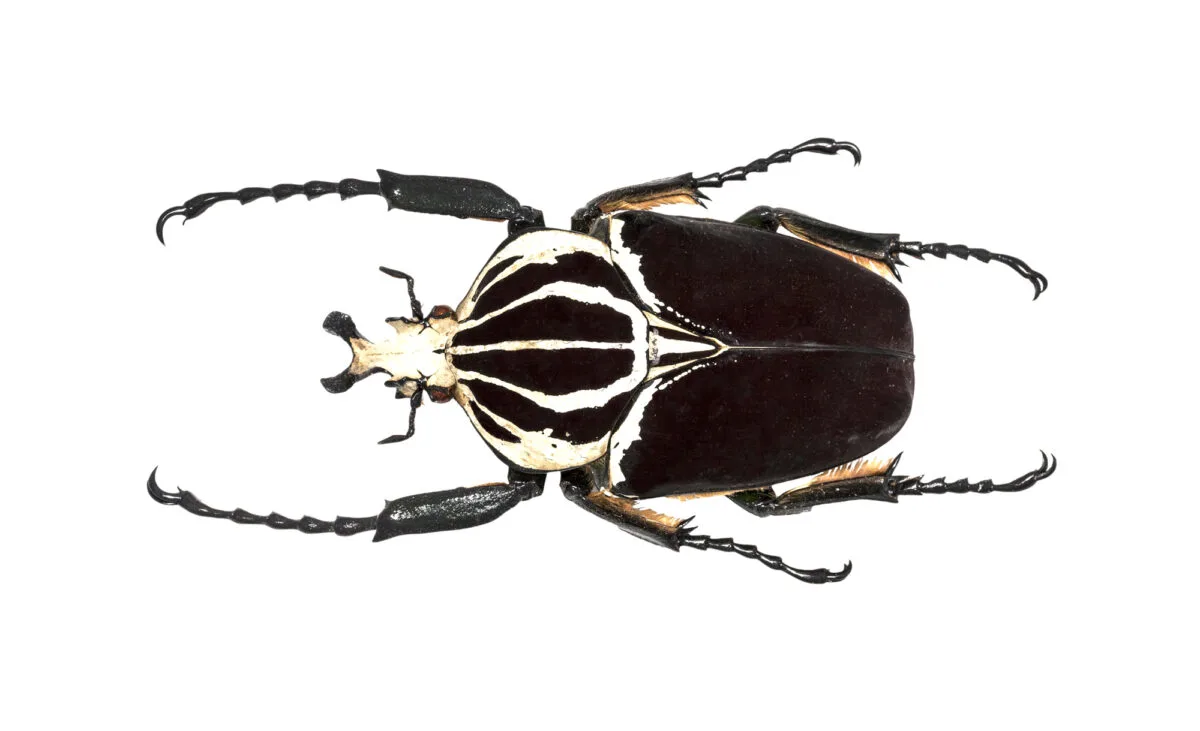Have you ever heard of the Goliath Beetle – the largest species of beetle in the world? This fascinating insect is widely regarded as an incredible example of nature’s bounty and beauty.
Recently, the world’s largest Goliath Beetle has been discovered!
In this article, we will explore the habitat and behavior of these impressive insects, along with other fascinating facts that make them so unique. So come for a wild ride into one of nature’s most spectacular wonders!
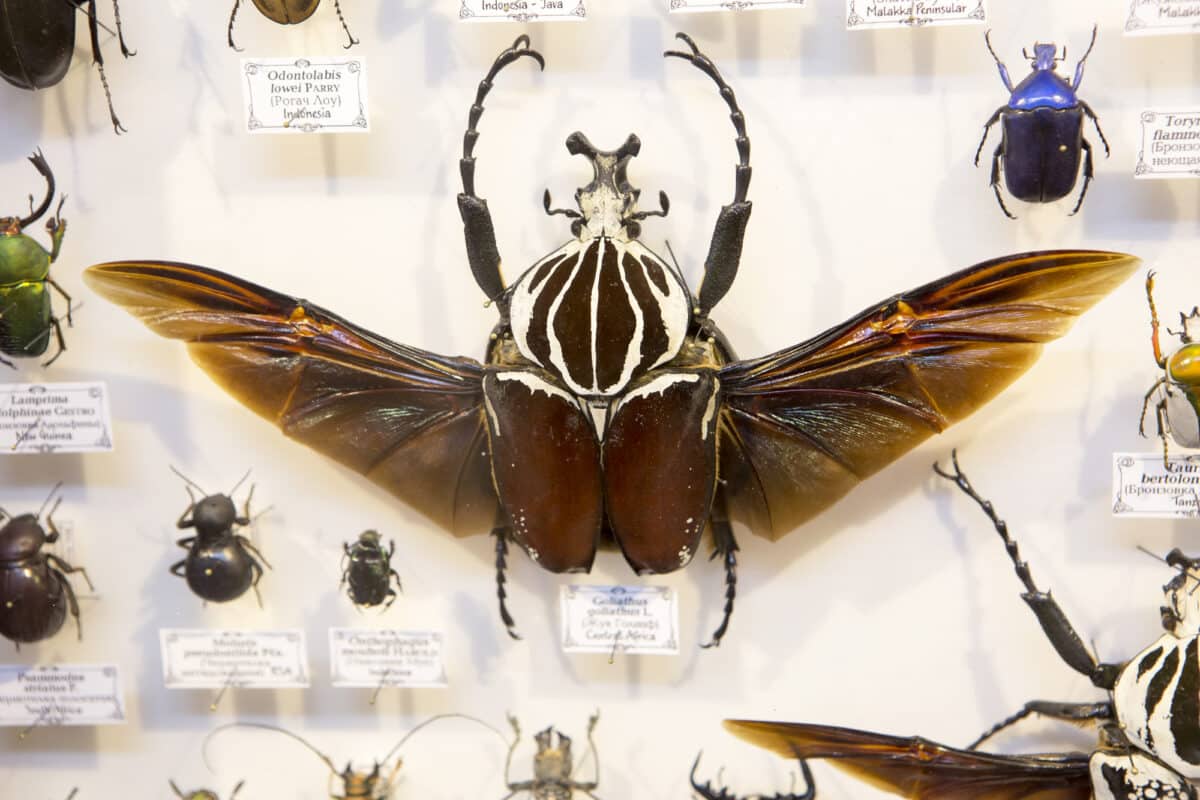
Introducing The Giant Goliath Beetle – The World’s Largest Insects
Have you ever heard of a beetle that weighs as much as a small bird? It may sound unbelievable, but it’s true.
The Giant Goliath Beetle is the world’s largest insect, with some growing up to 4.5 inches long and weighing up to 3.5 ounces. These behemoths are found in the rainforests of Africa and are a sight to behold. Their massive bodies are covered in a hard exoskeleton, making them nearly impervious to predators.
But despite their size, they are harmless to humans. If you ever see a Giant Goliath Beetle in person, prepare to be awe-struck by its enormity.
What Makes Goliath Beetles Unique, And Why Are They So Large
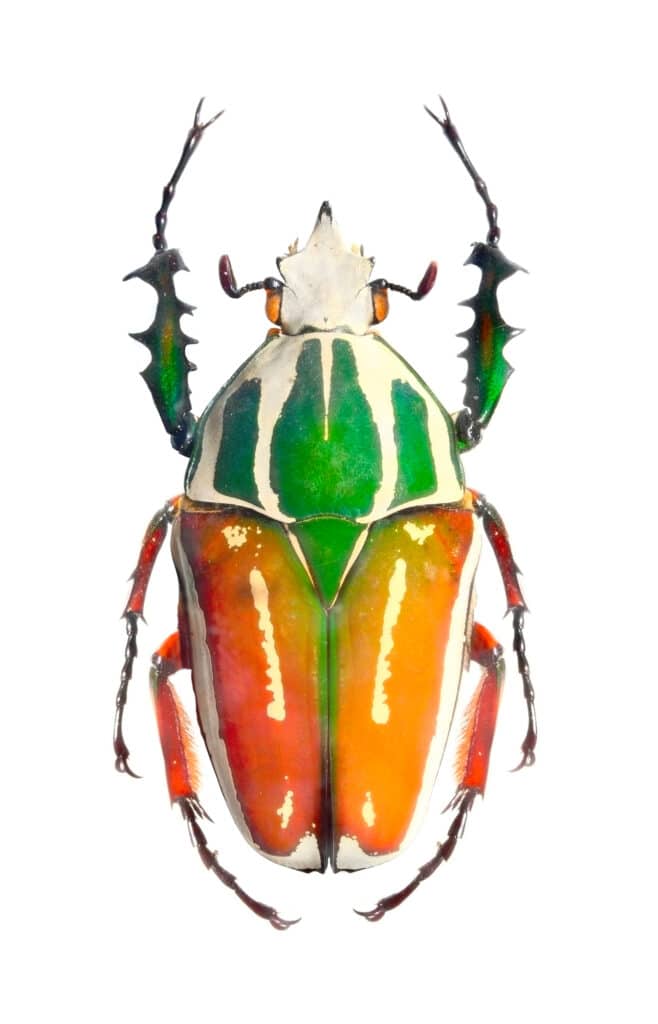
The Goliath Beetle is a fascinating creature due to its remarkable size and unique characteristics. These beetles are some of the giant insects in the world, with some species growing up to 4.3 inches in length and weighing up to 3.5 ounces.
But what sets them apart is their impressive horn-like protrusions, which they use for defense and attracting potential mates.
Goliath Beetles are also known for their gorgeous metallic colors, ranging from green to purple to copper. It’s no wonder these incredible creatures have captured the attention of so many people worldwide.
Where To Find Goliath Beetle And How To Observe Them In Their Natural Habitat
The Goliath Beetle is a magnificent creature commonly present in the tropical rainforests of Africa.
If you are interested in observing them in their natural habitat, consider visiting countries like Kenya, Tanzania, or the Ivory Coast, where you can find them living on trees. You need to be patient when seeking out this species since they are nocturnal, which means they are active at night.
The ideal to observe them is during the rainy season when there are plenty of fruits and flowers for them to feed on. Once you find them, maintain a respectful distance and use a flashlight or camera to avoid disturbing them. With some patience and careful observation, you’ll be able to witness the beauty of the Goliath Beetle in its natural home.
How Goliath Beetles Benefit Their Environment, And The Threats They Face?
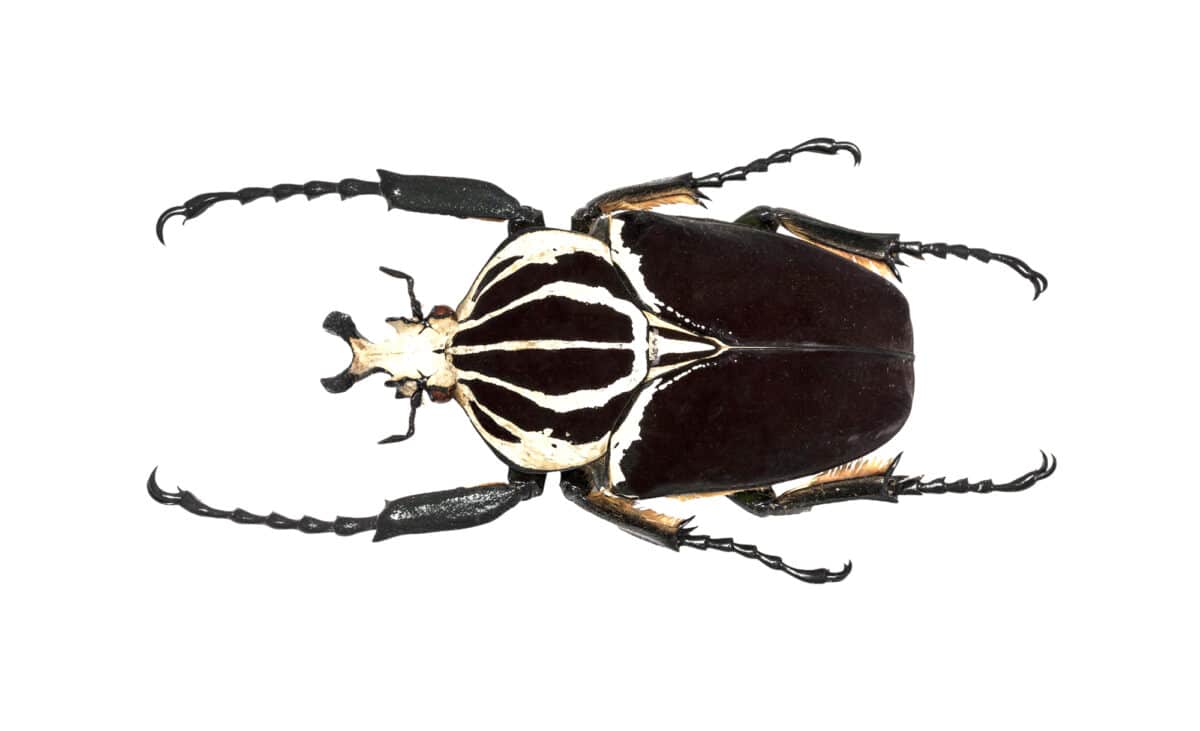
The mighty Goliath Beetle may be one of the most giant insects in the world, but it’s not just its size that makes it a fascinating creature. These behemoths play an essential role in their environment as recyclers.
They feed on decaying wood and plant material, breaking it down and returning essential nutrients to the soil. Unfortunately, these impressive beetles face numerous threats to survival, including habitat loss from deforestation and illegal trade for the pet and souvenir markets.
As we continue to learn more about the importance of these insects, we must also work to protect them and ensure their continued presence in our ecosystems.
Interesting Facts About Goliath Beetles, Including Their Diet And Lifespan
Goliath Beetles are one of the giant insects in the world, and their impressive size is just one of the many exciting things about them. Precisely speaking, these giants of the beetle world can grow up to four inches long and weigh as much as three to four ounces.
Despite their intimidating size, they are harmless to humans. One of the most fascinating things about Goliath Beetles is their diet – they primarily eat tree sap, fruit, and nectar. They have also been known to eat dung.
Regarding lifespan, some species can live up to five years in captivity. With such unique characteristics and behaviors, it’s no wonder that Goliath Beetles capture the attention and curiosity of bug enthusiasts and casual observers alike.
What You Can Do To Help Protect Goliath Beetles From Extinction
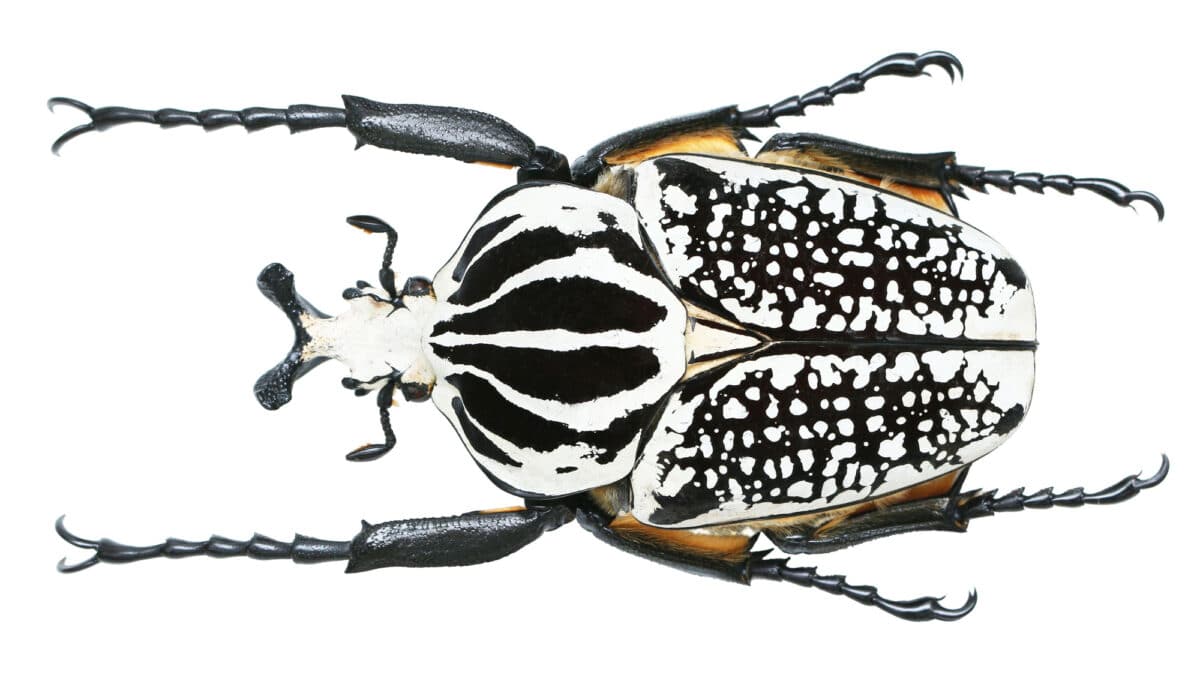
Goliath Beetles are one of the biggest beetles in the world, and unfortunately, they are also on the brink of extinction.
If you are an animal lover and feel a responsibility to protect these majestic creatures, there are several things you can do to help.
First and foremost, you can support organizations dedicated to preserving their habitats and researching ways to increase their population.
Additionally, you can reduce your use of pesticides and chemicals that harm the environment since these chemicals devastate beetle populations.
Lastly, educating others on the importance of these fascinating creatures can help raise awareness and inspire action.
Frequently Asked Questions
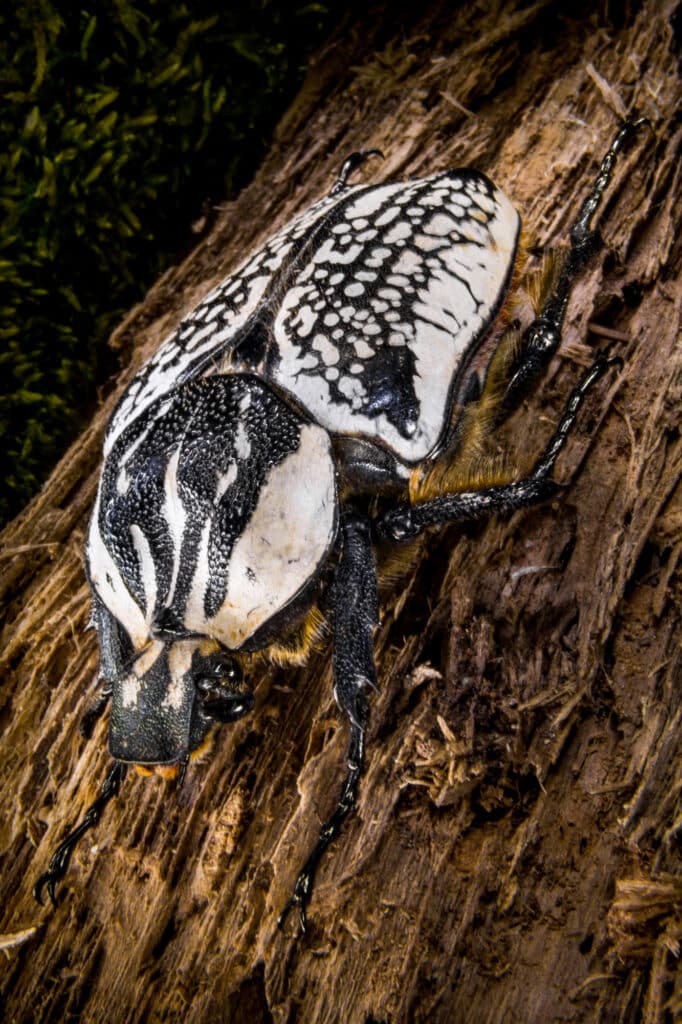
1. What is a Goliath beetle?
A Goliath beetle is a type of beetle that is native to Africa, and it is known for being one of the biggest beetles in the world. The beetles can grow up to 4.3 inches (11 centimeters) in length and weigh up to 3.5 ounces (100 grams).
2. Where can I encounter the giant Goliath beetle ever discovered?
The largest Goliath beetle ever discovered is currently on display at a museum in Japan. However, Goliath beetles can be found in the wild in various parts of Africa, and they are sometimes kept as pets by insect enthusiasts.
3. Is it safe to handle a Goliath beetle?
While Goliath beetles are not typically aggressive, they have sharp claws and can deliver a painful bite if threatened. It is best to leave handling Goliath beetles to trained professionals or experienced insect enthusiasts who can take them safely.
The Final Say
Goliath Beetles have left an indelible impression on scientists and the public alike for their large size and wide range of habitats. They’re fascinating creatures that are fascinating to study, providing us with more information about their daily habits and environments.
Despite their great environmental benefits, Goliath Beetles still face many threats from human activities. This is why it is so vital that we act now to protect them before they suffer further decline due to human action.
By creating sanctuary areas for the Giant Goliath Beetle, protecting their habitats, avoiding activities such as deforestation or agricultural use of pesticides in their natural habitat, and supporting research efforts that focus on this species’ conservation strategy, we can help ensure these remarkable creatures will remain wild for generations to come.
Enjoyed this article? Learn more about different species: Aardwolf, African Golden Cat, African Civet
Join our Forum for free today!

- Top 10 Savanna Animals - June 3, 2024
- American Bulldog – Cute Ball of Fear - May 31, 2024
- Mammoths Vs. Mastodons - May 31, 2024

